Design Museum: A glossy new era and home
- Published
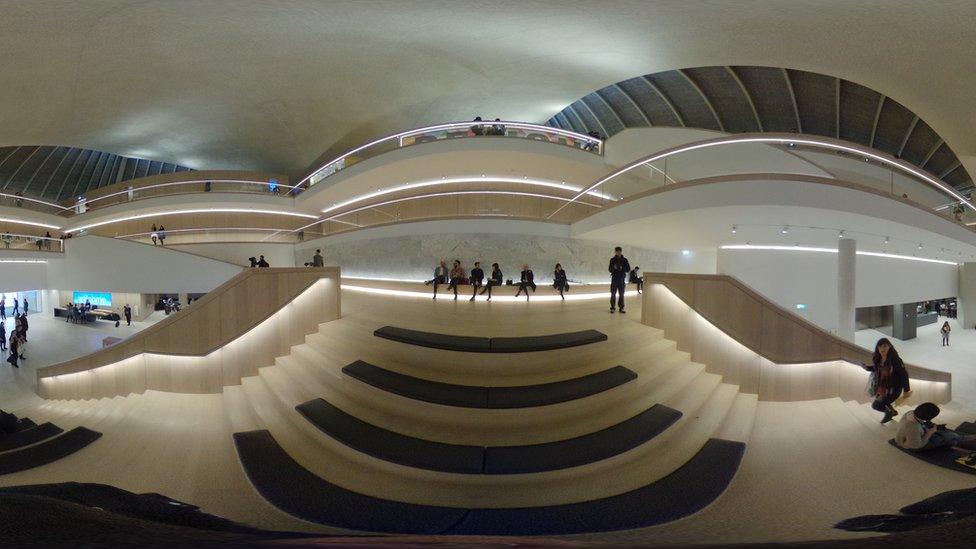
The museum's new home and look in Kensington, London is in itself a stylish contemporary piece of design
For years London's Design Museum got by in a former banana warehouse near Tower Bridge. Now it has moved to a cool, minimalist home in Kensington. The new building is much bigger. It will offer, says the director, far more to intrigue all visitors - and not just the hardcore design fans.
In 1962 the Queen opened the Commonwealth Institute on the leafy fringes of Holland Park in London. Its exhibition spaces were meant to help redefine Britain's relationship with its former colonies and the building inherited some of the feel of the Festival of Britain a decade earlier.
But the institute gained a slightly unfair reputation for dull displays on the life-cycle of the coffee-bean. The public never entirely took the place to heart, finances grew tricky and in 2004 the Commonwealth Institute closed.
About the same time, across London at Shad Thames, it was becoming clear that the Design Museum (which Sir Terence Conran had founded in 1989) needed a bigger location. The process of moving has been a long one: expanding onto the new site has cost £83m.
The money has been a patchwork. Sir Terence gave £17.5m and there were other private donors. There was cash from the Arts Council and from Heritage Lottery Funding. Three new residential blocks at the Kensington site have helped finance the project.
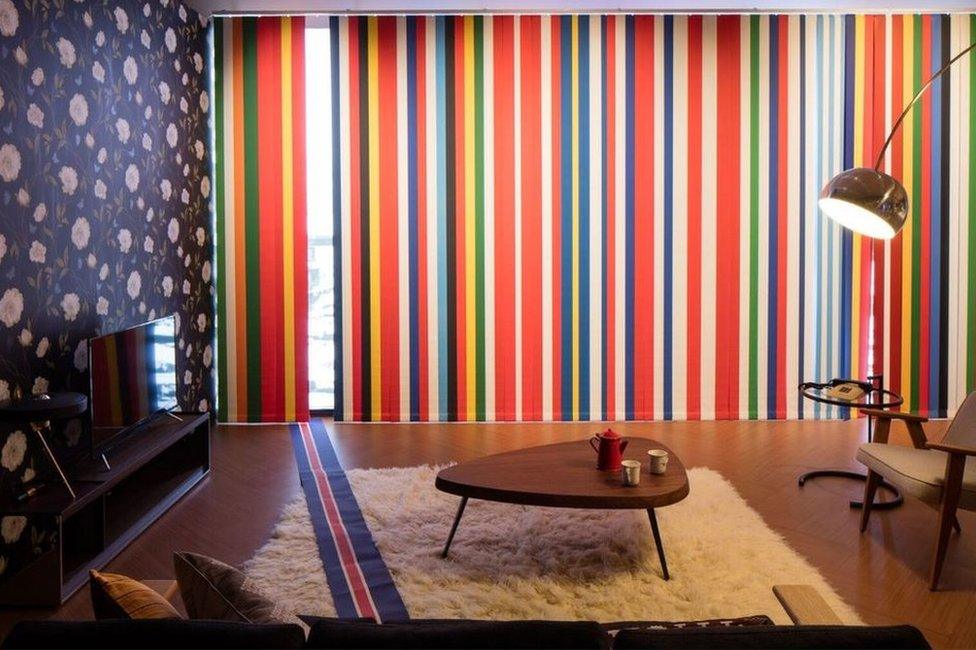
The 11 installations in the Fear and Love exhibition comment on contemporary life and politics as shown in the Pan-European Living Room
The museum's director Deyan Sudjic joined the museum a decade ago, with a brief to secure a new home and make the big transition.
"The Design Museum is about helping explain the complicated world about us" he says. "It's not necessarily all about taste or even what is good design versus bad design. In our new home we can do far more to ask what makes the world tick. Often we'll be about asking questions as much as trotting out neat answers."
The new building has at its centre an enormous oak-clad atrium. There are two areas for temporary exhibitions and a permanent collection on the top floor. There's a bookshop, coffee-shop, restaurant, learning area, members' room and all the other bolt-ons which come with modern palaces of culture.
The building itself and the permanent collection are free to enter; temporary exhibitions are not.
It's all stylishly minimalist, even if for now the exhibits seem strangely hidden away as you come through the front door. In its first year there are expected to be around 650,000 visitors.
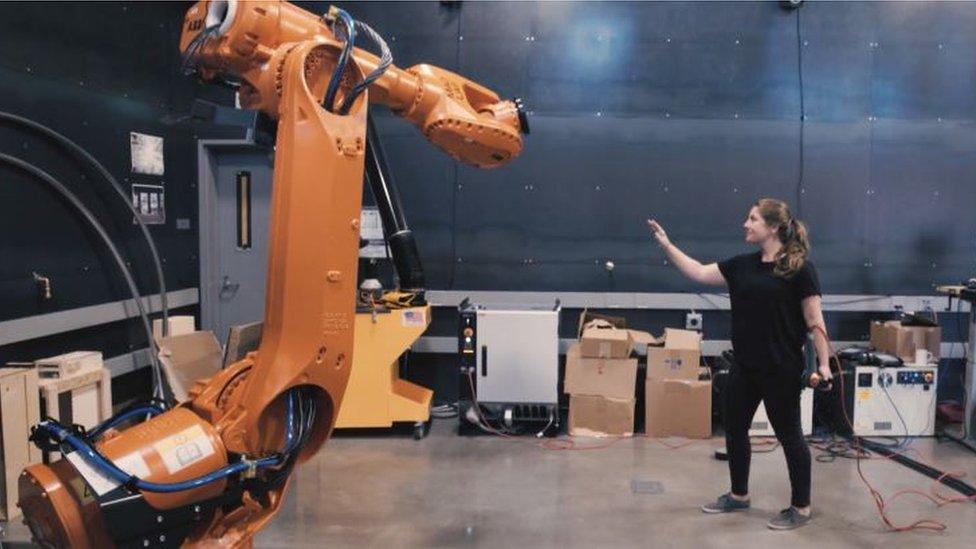
Mimus, based on industrial robot, detects a visitor approaching and pans and swivels to follow their course
One of the first temporary exhibitions is Fear and Love - Reactions to a Complex World. It consists of 11 varied installations which allow design concepts to comment on contemporary life and politics.
A guaranteed hit with eight year-olds (or anyone pining still to be one) is Mimus, based on the kind of industrial robot found in a car plant. Mimus is a bit like Wall-E's taller and more assertive cousin.
Designed by Madeline Gannon, the robot detects a visitor approaching and pans and swivels to follow their course. Mimus can get a little in your face and the experience is disconcerting.
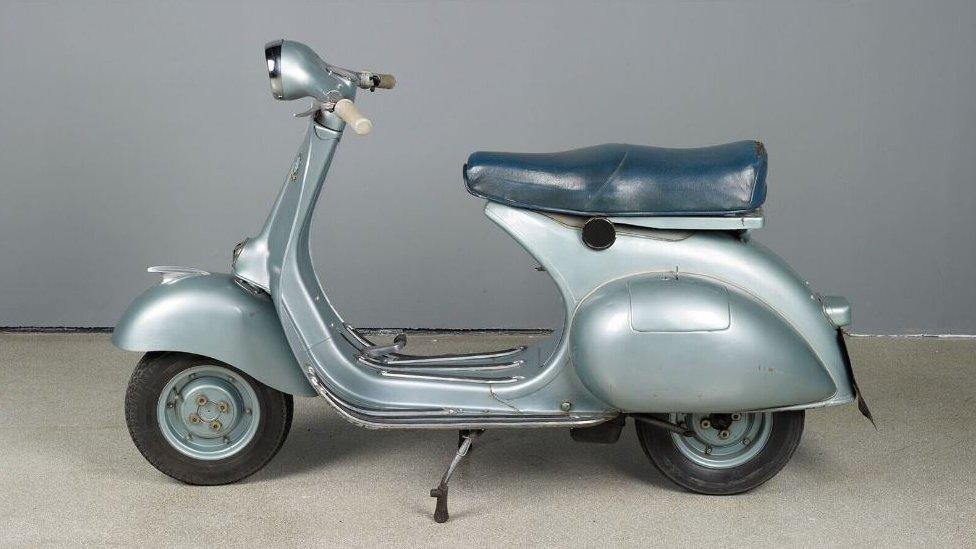
The museum houses examples of favourite classic design as seen in the enduring Italian Vespa scooter
Sudjic says the point is to get us thinking about things such as automation which are changing our world. "We challenged architects, fashion designers, digital specialists, people who make websites - we wanted them to think about the things which make us anxious.
"So we worry that robots will take away our jobs or that the iPhone has taken away our privacy and that Britain has left the European Union. Design can help address all those things."
Sudjic is proud of the Pan-European Living Room, an installation from a Rotterdam architectural consultancy called the Office for Metropolitan Architecture (OMA). Conceived after this year's Brexit vote, it resembles a room display in a big furniture store with an item from each of the 28 EU member states.
"It's a lament for, or challenge to, the referendum result. So for instance there are four different chairs made in factories around eastern Europe and there's even a blue glass bottle from Malta. There's a Danish sofa and Britain is represented by some rather lurid wallpaper from Osborne & Little, the company owned by the family of the former Chancellor of the Exchequer George Osborne."
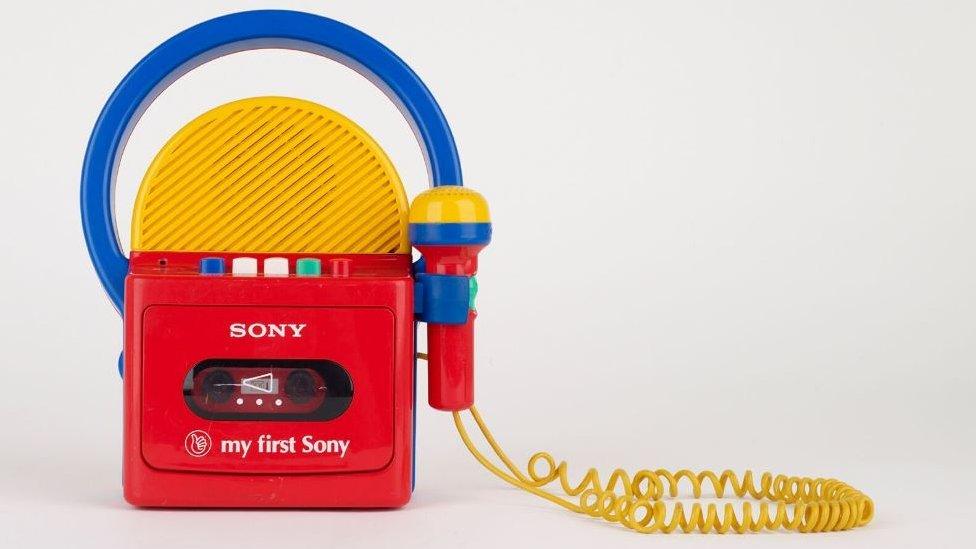
The Sony Walkman portable cassette player first emerged in 1975
Sudjic points out another political statement in the piece. Each of the EU national flags is represented on vertical blinds at one end of the room - except that Britain's is missing. Through the narrow gap we glimpse a black and white image of Rotterdam after World War Two, in ruins.
For Sudjic design is borderless. "It crosses frontiers and mixes subjects. We're not simply beating our chests here for British design, though often that's superb. The Fear and Love exhibit involves designers from places such as Japan, America, the Netherlands and China."
In fact an example of classic Chinese design is the biggest object in a fascinating part of the permanent galleries upstairs - a wall covered in design icons. It's said there have been half a billion Flying Pigeon bicycles made in China but there's much else: a total of 200 objects chosen by the public to represent favourite designs.
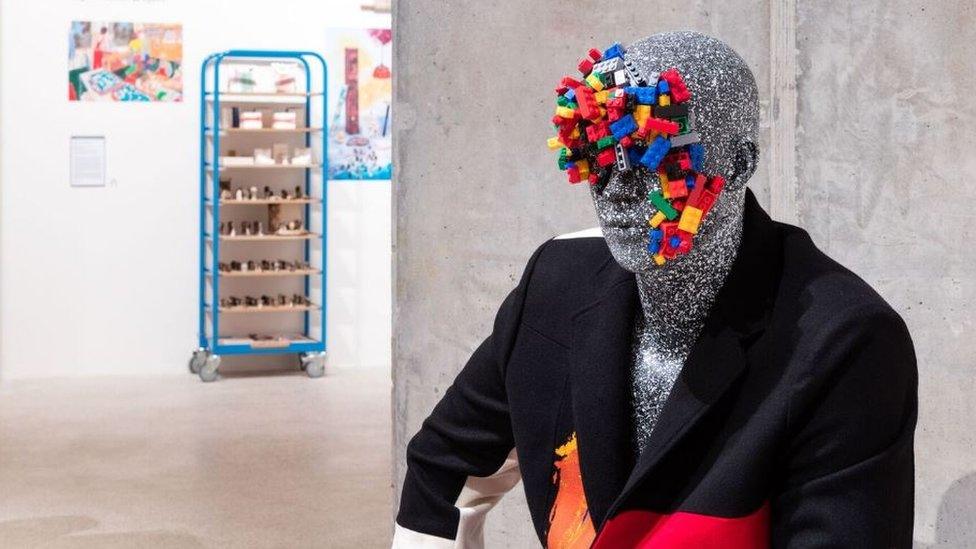
The museum's director Deyan Sudjic says design "tells you what people have affection for or want to buy or what they want to give to their kids"
Some are familiar classics, such as a London Tube station roundel. But other objects pinned to the wall range from a Bible and a plastic comb to a rubber band and an olive-stone remover.
Sudjic says he doesn't want first-time visitors to the museum to think design is something over there in the distance and always elevated beyond everyday life.
"It's the sum of someone's choices in making a particular object and it's also the choices we make ourselves.
"Design tells you a massive amount about the culture which created it. It tells you what people have affection for or want to buy or what they want to give to their kids - we want to represent all those things in the new building."
The Design Museum opens on 24 November 2016.

Follow us on Twitter @BBCNewsEnts, external, on Instagram, external, or if you have a story suggestion email entertainment.news@bbc.co.uk, external.